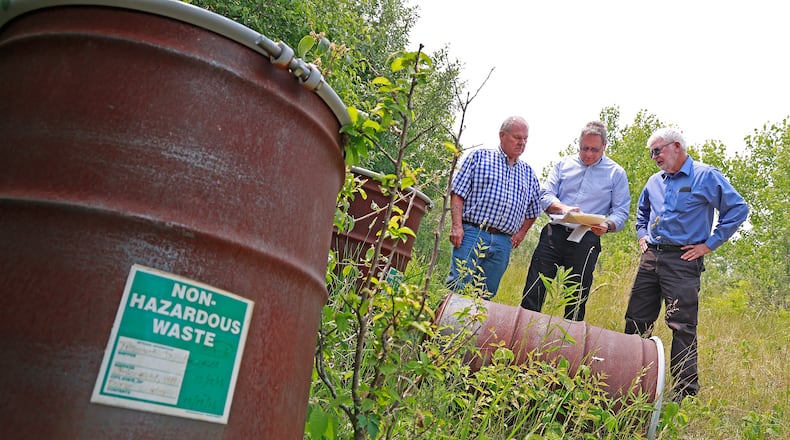Ricketts and his group consider it essential to know if contamination is already spreading.
“The most important thing is we will have an answer,” Ricketts says. “We all hope for the same results as 10 years ago and that there is no migration of hazardous chemicals.”
Ricketts was part of a group of local leaders who met with EPA remedial project manager Jenny Polster early in the week. German Twp., Tremont City, Springfield, Clark County, People for Safe Water and County Health Department representatives all met to discuss progress on the project.
The 8.5-acre site in northern German Twp. was used to dump industrial waste from 1976 to 1979. It’s estimated over 1.5 million gallons of hazardous waste is buried at the location, which is adjacent to an aquifer that provides water to not only Springfield and Clark County, but much of southwestern Ohio.
Credit: JIM NOELKER
Credit: JIM NOELKER
Polster provided a presentation at the Aug. 27 Springfield City Commission meeting, telling city officials that design efforts have already reached 30% of the way to completion of the remedial design work, which they thought would take until October.
“This is a really complicated, complex design,” she said. “The 108,000 different types of waste have to be characterized and staged in this space.”
Every step of the process has to include protections for human health and the environment.
Polster explained that all 51,500 barrels will be excavated and their contents individually identified in order for appropriate disposal to be determined. Plans currently call for liquid waste to be removed from the location for disposal elsewhere, while solid wastes will remain and be redeposited into “the most robust type of landfill the EPA requires for the disposal of hazardous waste” which will be constructed on the existing site.
The U.S. EPA investigation into the contamination began in 1997 and ultimately identified organic compounds and metal contaminants including volatile organic compounds identified as xylenes, ethylbenzene, toluene, methylene chloride, chromium and arsenic.
The companies responsible for the dumping — Chemical Waste Management Inc., Franklin International Inc., International Paper Co., The Procter & Gamble Co., PPG Industries Inc., Strebor Inc. and Worthington Cylinder Corporation — were ordered by a U.S. District Court in 2022 to begin the clean-up and work with the EPA.
Together they assume responsibility for the clean-up and to monitor the area’s water quality “for perpetuity” with a goal of preventing any future risk of contamination. All costs are being absorbed by the companies, so there is no cost to taxpayers for the extensive work and monitoring required.
About the Author

